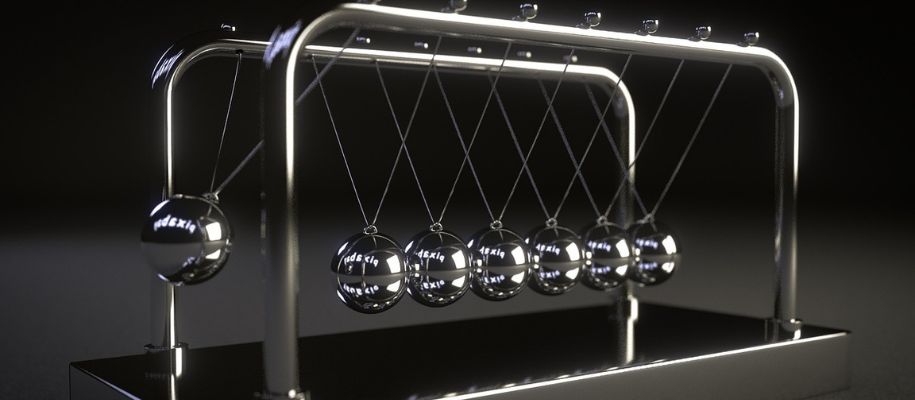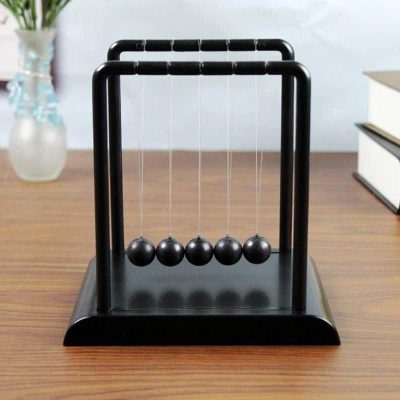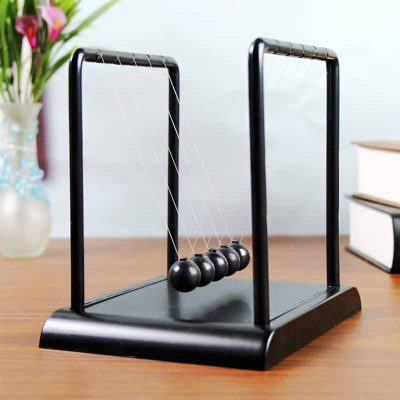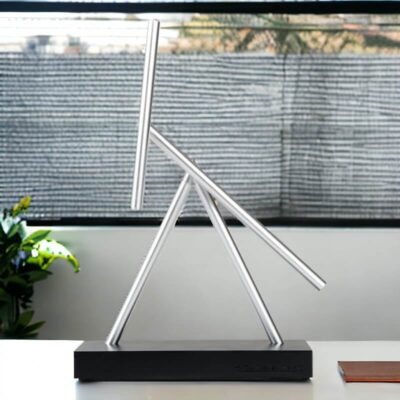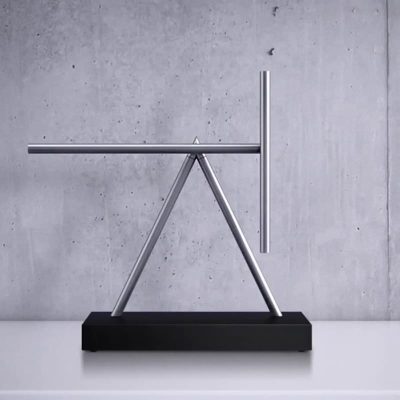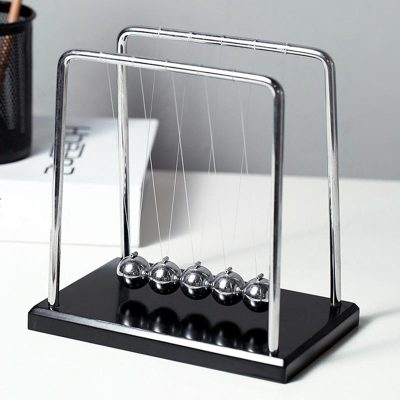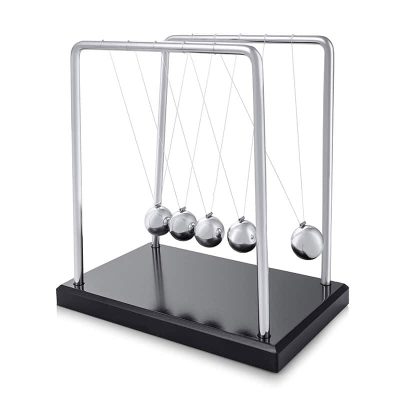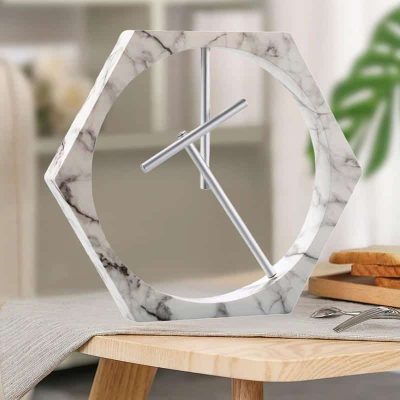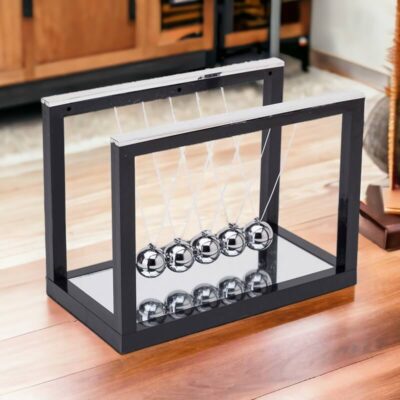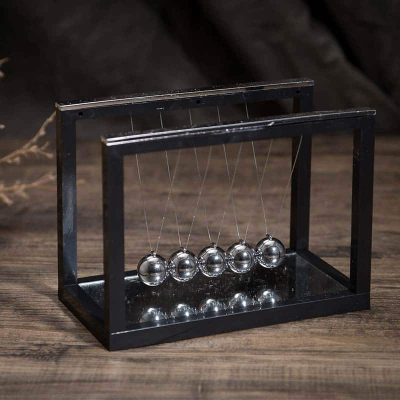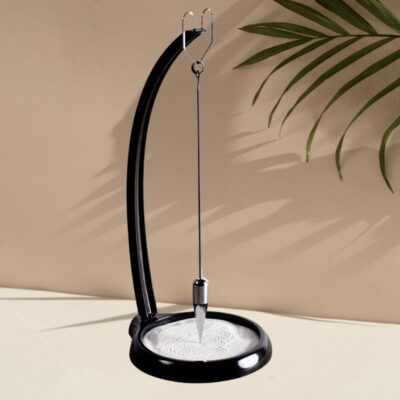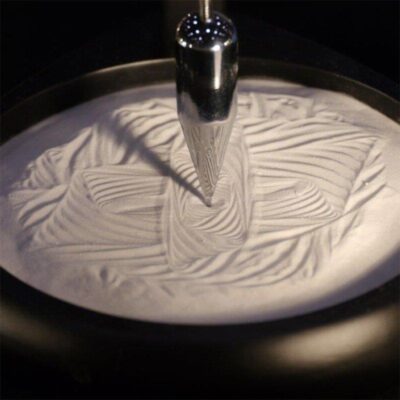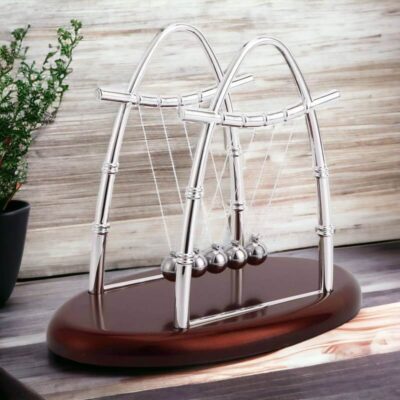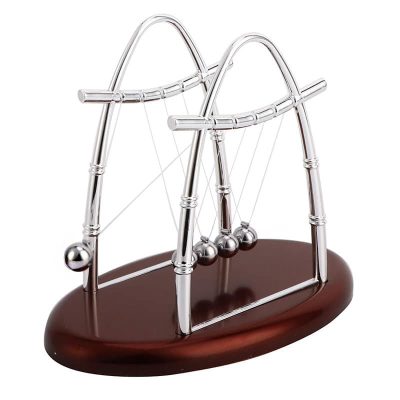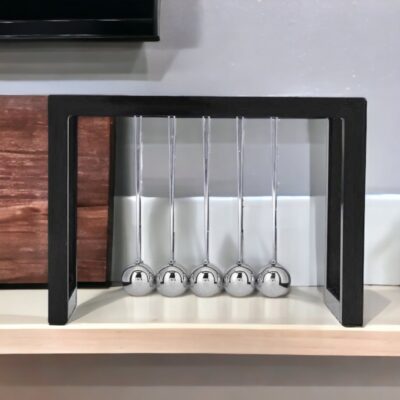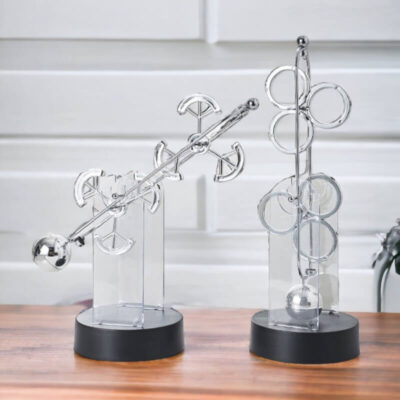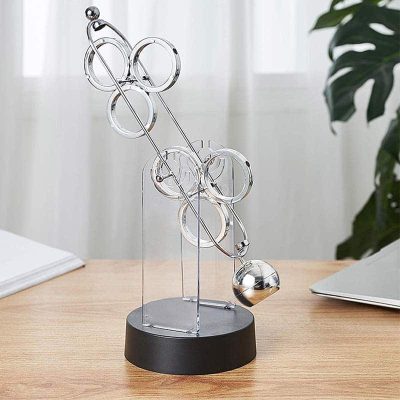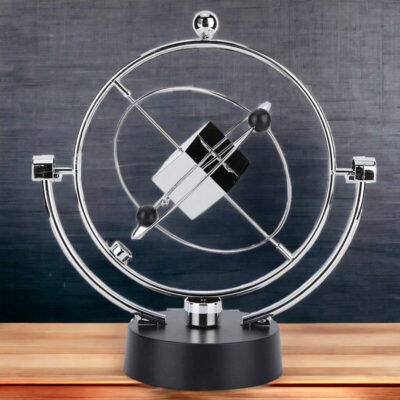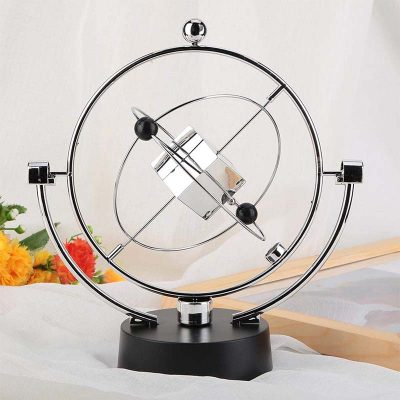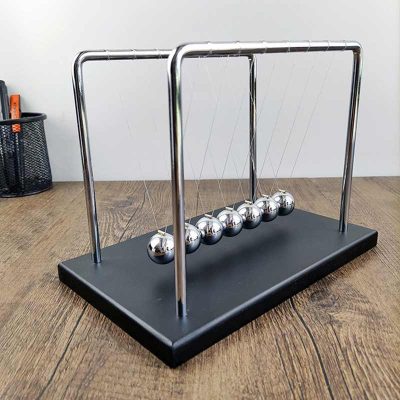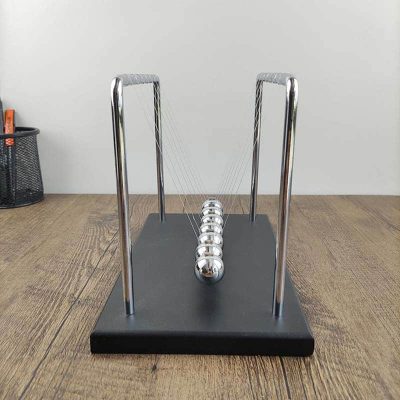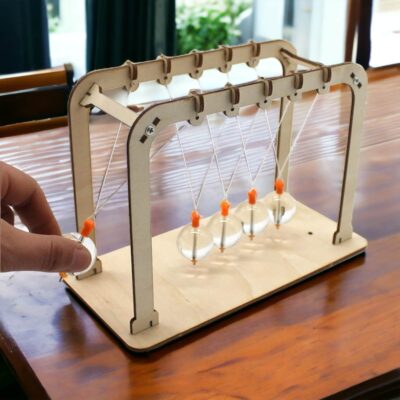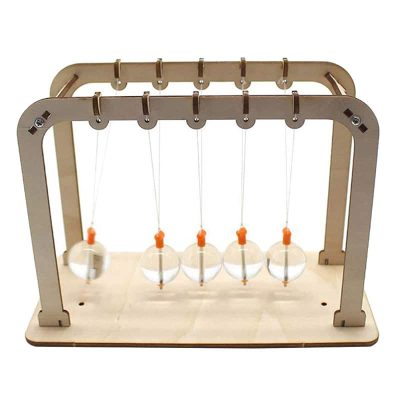Who invented the Newton pendulum?
Contrary to popular opinion and its name, the perpetual motion pendulum was not invented by Isaac Newton, nor was he the first person to write down the rules that the toy presents.
The principles demonstrated by an abacus were first discussed in a paper written by John Wallis, Christopher Wren and Christiaan Huygens to the Royal Society in 1662. Christiaan Huygens, in particular, contributed most to the creation of the cradle. Huygens’ research paper, De Motu Corporum ex Percussione, examines collisions of suspended objects and the transfer of motion from a moving body to a body at rest. Huygens was the first to mention that to explain the mechanism of a ball pendulum, it was necessary to use the conservation of momentum and a number proportional to the velocity multiplied by the mass squared. The quantity mass multiplied by velocity squared is, in fact, the kinetic energy of a body in motion, but this term was invented almost 100 years after Huygens’ discovery.
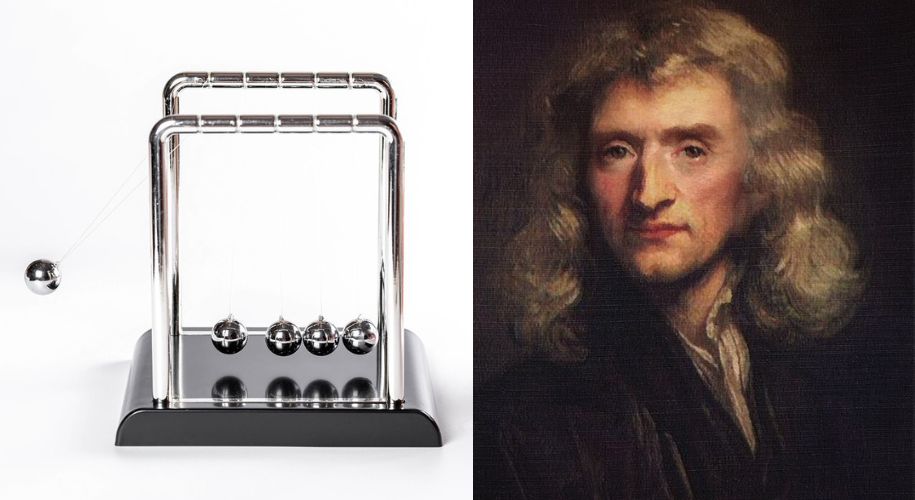
On the other hand, the law of conservation of momentum was originally proposed by René Descartes. However, the mathematical representation he proposed included speed instead of velocity. René’s formula, momentum = mass x velocity, could be used in certain scenarios, but could not explain the collision of objects and the resulting quantities of motion. Huygens replaced velocity with velocity, a vector value that was more effective in explaining collisions of objects.
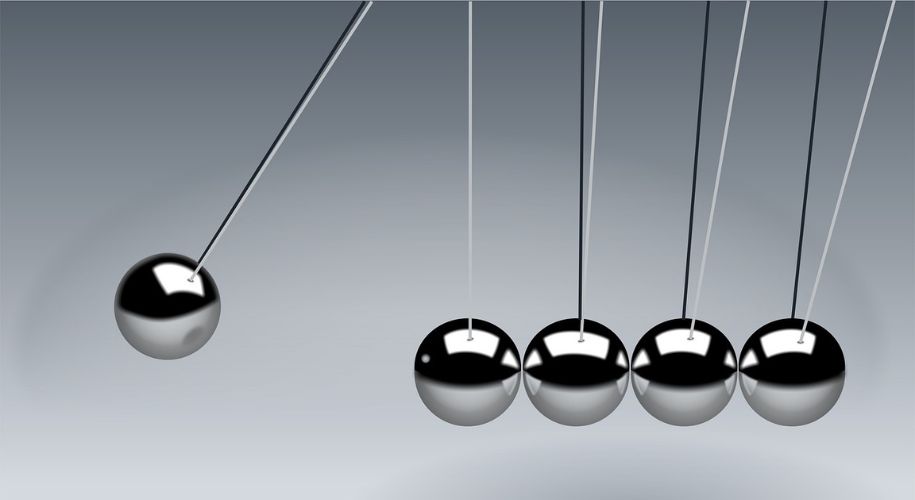
Another trail leads back to Abbé Mariotte, a French priest and physicist, who was the first to carry out and record experiments using pendulum balls. Issac Newton wrote about Mariotte’s research in his book Principia, and it was his contribution to the system we now know as his own.
In fact, it is thought that the abacus was named in honor of Newton for two reasons.
- The law of conservation can be derived from Newton’s second law (Force = mass acceleration)
- As a tribute to Newton’s greater contribution to the science of physics than Huygens or Mariotte.
How does a Newtonian pendulum work?
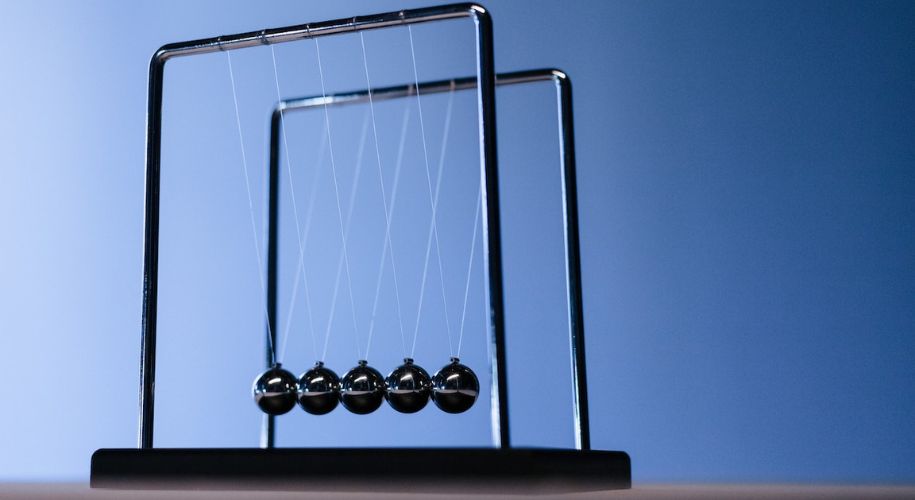
Whether you know it as Newton’s Cradle or Newton’s abacus, chances are you’ve already seen this educational desk toy that seems to defy explanation. This scientific object consists of a row of five metal balls, positioned so that they barely touch and suspended from a frame by thin wires.
When a ball at one end of the pendulum is moved away from the others and released, it strikes the next ball, which remains stationary. But the ball at the opposite end of the row is thrown into the air, then comes back to hit the other balls, setting off the chain reaction in reverse.
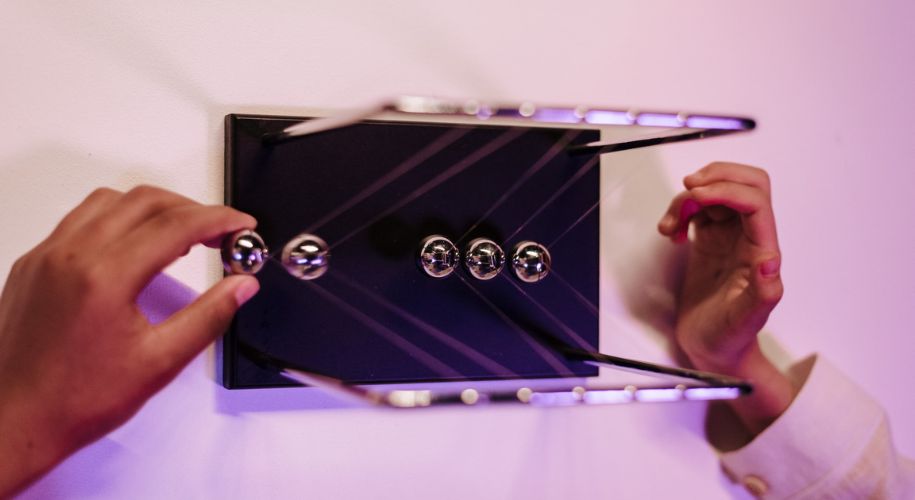
So how does Newton’s abacus work? The device can be explained using some of the fundamental principles of physics and mechanics (as theorized by Sir Isaac Newton, René Descartes and others).
Newton’s pendulum aptly demonstrates the principle of conservation of momentum (mass multiplied by velocity). This principle states that when two objects collide, the total momentum of the objects before the collision is equal to the total momentum of the objects after the collision.
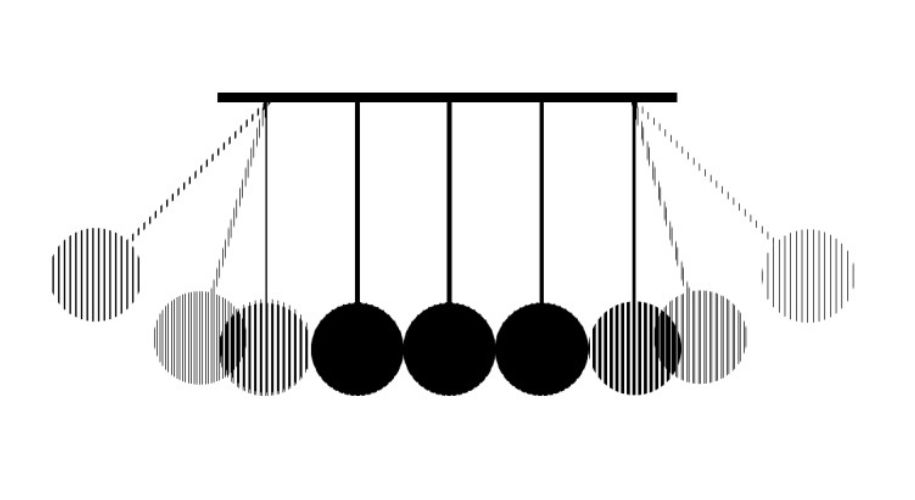
In other words, when the first ball in Newton’s cradle collides with the second, the first ball stops, but its momentum is not lost, just transferred to the second ball, then the third, then the fourth, until it reaches the very last ball. You see this conservation of momentum when the last ball swings through the air with almost the same momentum as the first ball. So if two balls are lifted into the air at one end of the apparatus and released, then two balls at the opposite end will swing in response.
This perpetual movement of balls is also proof of Newton’s law of conservation of energy, which states that energy can neither be created nor destroyed, but can change form. Newton’s cradle illustrates the latter part of the law quite well, as it converts the potential energy of a ball into kinetic energy, which is transferred along the line of balls and ultimately causes the last ball to swing upwards.
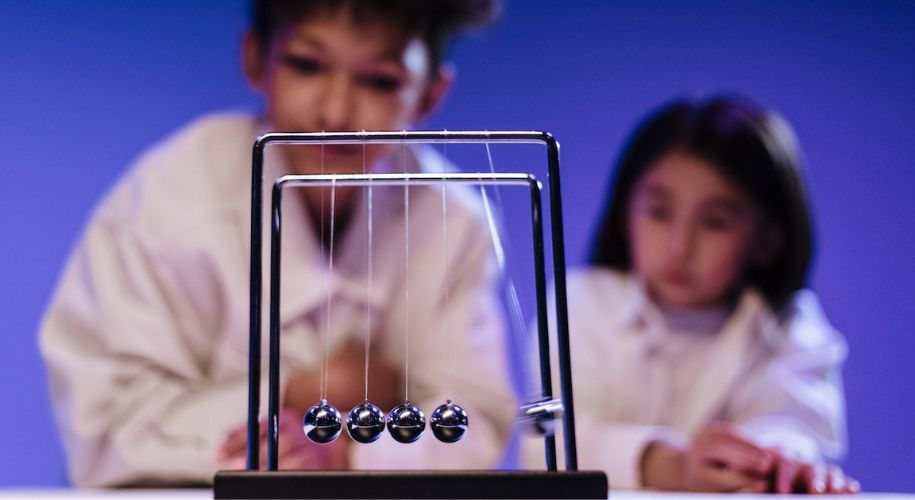
FAQ on Newton’s cradle
Does Newton’s pendulum stop and why?
As the balls swing at each end, they end up losing energy for many things. These include air friction, sound when they collide and heat when they collide. All these factors remove energy from the balls until the kinetic energy and momentum are reduced to zero, which slows the balls down and causes them to stop. Newton’s pendulums work for varying lengths of time, depending on the model, but they all eventually come to a halt due to a lack of energy.
What drives the last ball in a Newtonian pendulum?
Newton’s pendulum is made up of 5 balls suspended by wires. When the first ball is released from its equilibrium, it is attracted by gravitational force and strikes the second ball. The kinetic energy is then transmitted to the last ball, causing it to move. In effect, it will be forced to swing, as it cannot transfer its energy to another ball.
What is the Newton pendulum used for?
You’ll often find Newton’s pendulum on desks around the world. This elegant scientific object helps to demonstrate the conservation of energy, the conservation of momentum and the principle of friction with balls that swing and collide. It’s also an ideal stress reliever to decorate your space.
Can a Newton abacus only work with certain materials?
Newton’s principle works with any material as long as the balls are highly elastic and of uniform density. Stainless steel is one of the most common materials, as it is both highly elastic and relatively inexpensive. Other elastic metals such as titanium also work, but are more expensive.
Other articles you may be interested in:
